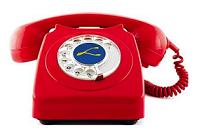 “If it’s the Psychic Network why do they need a phone number?” – Robin Williams
“If it’s the Psychic Network why do they need a phone number?” – Robin Williams
Arbitron is probably asking the same question, as it is becoming more and more difficult to track Americans on their phones in a rapidly changing telecommunications environment.
Consider the following headlines and news stories:
"Cell Phone Spending Surpasses Land Lines" – Yup, 2007 was the first time ever that U.S. households spent more on cell phones than land lines. As Allyn Hall, consumer research director for In-Stat , pointed out, "What we’re finding is there’s a huge move of people giving up their land line service altogether and using cell phones exclusively."
"Who Needs A Land Line? Probably Not You" – Citigroup’s Michael Rollins issued a report about the "teleconomy" and these factoids speak volumes:
– The telcos are losing residential phone subscribers to VoIP and cellular phones at a rate of 7-8% a year.
– By 2010, wireless-only households are expected to jump to 27% (from 13% in ’06 and an estimated 17% in ’07).
– Wireless penetration should jump from an estimated 83% in ’07 to 87% by the end of this year.
"AT&T Announces Intention to Withdraw from Pay Phone Business By End of 2008" – Why do you need a pay phone when there’s a phone in your pocket? The data shows that pay phones have fallen from 2.6 million in 1998 down to about 1 million today. AT&T will hand over what’s left of this business to independent providers.
Arbitron knows all about this data, and as our initial Tech Poll data revealed back in 2005, the "Cell Phone Only" problem is big, and getting bigger – especially among younger people who are ditching their land lines faster than ever. The National Institute of Health – amazingly, the government agency that tracks the CPO situation – reports that nearly 28% of 18-24s and 3 in 10 25-29s fall into this group.
This is why Arbitron is moving from a phone-based sample frame to one that is addressed-based. The thinking is that a large percentage of these households will fall into the CPO group, and then it’s open season to encourage them to participate in the ratings process.
Changing realities require different tactics. For stations that focus on 18-34 year-olds, better representation can’t come soon enough. And these same stations clearly need to be developing plans to ensure their content and personalities can be received by the growing throngs of cell phone users in their markets. AT&T, Arbitron, and other major players are making the adjustments. Radio needs to figure it out, too.
Tomorrow: A Cell Phone Only adopter that may surprise you, and possibly determine how news coverage about the presidential race might change.
- Can Radio Afford To Miss The Short Videos Boat? - April 22, 2025
- Media And Technology In 2025: Believe It Or Not! - April 18, 2025
- In Radio, You Just Never Know - April 17, 2025




With the exception of a land line for a fax machine, we’ve been a wireless home for over three years. Some of our neighbors are, too. It’s very convenient.
Steve
Mansfield, TX